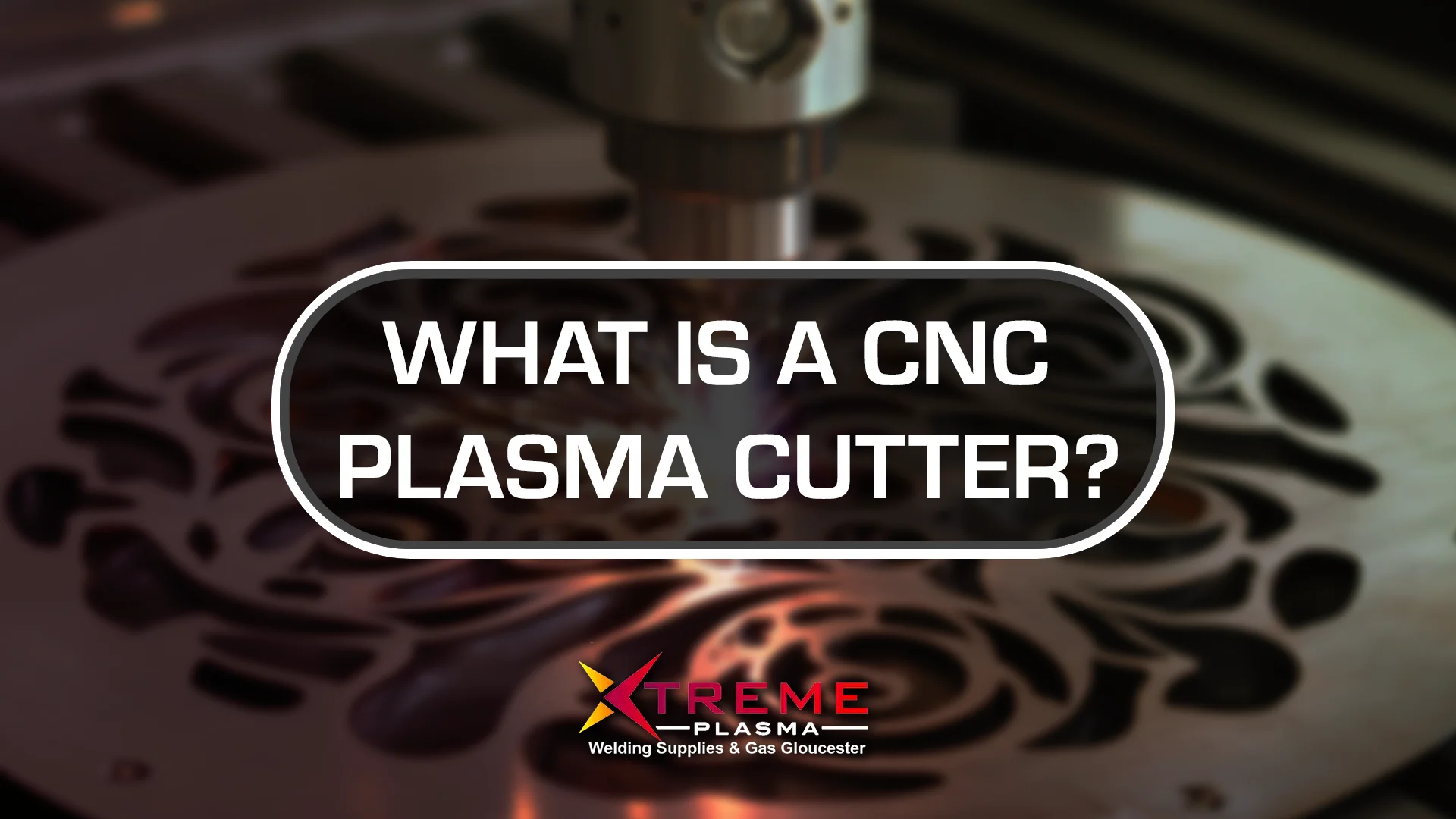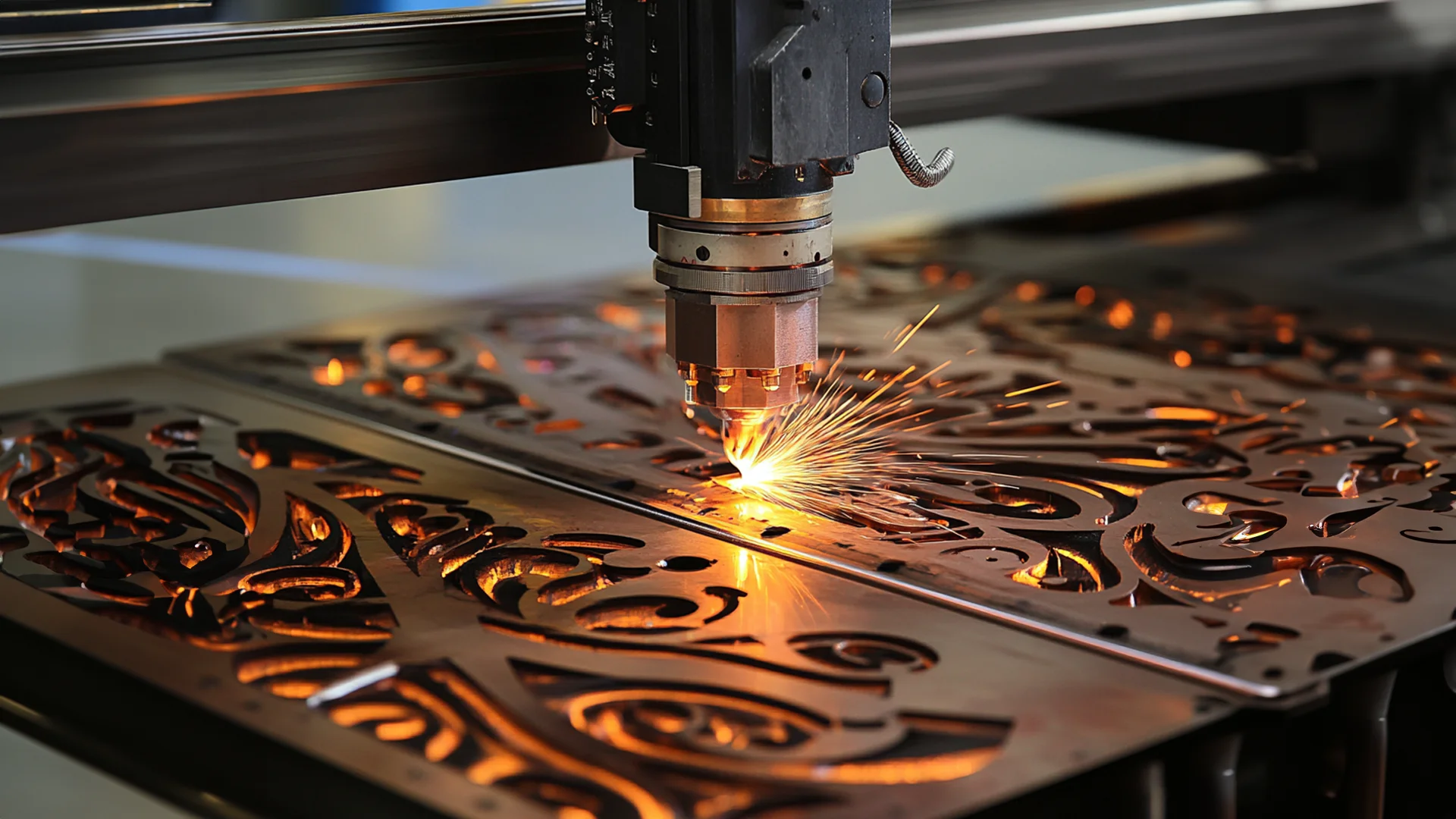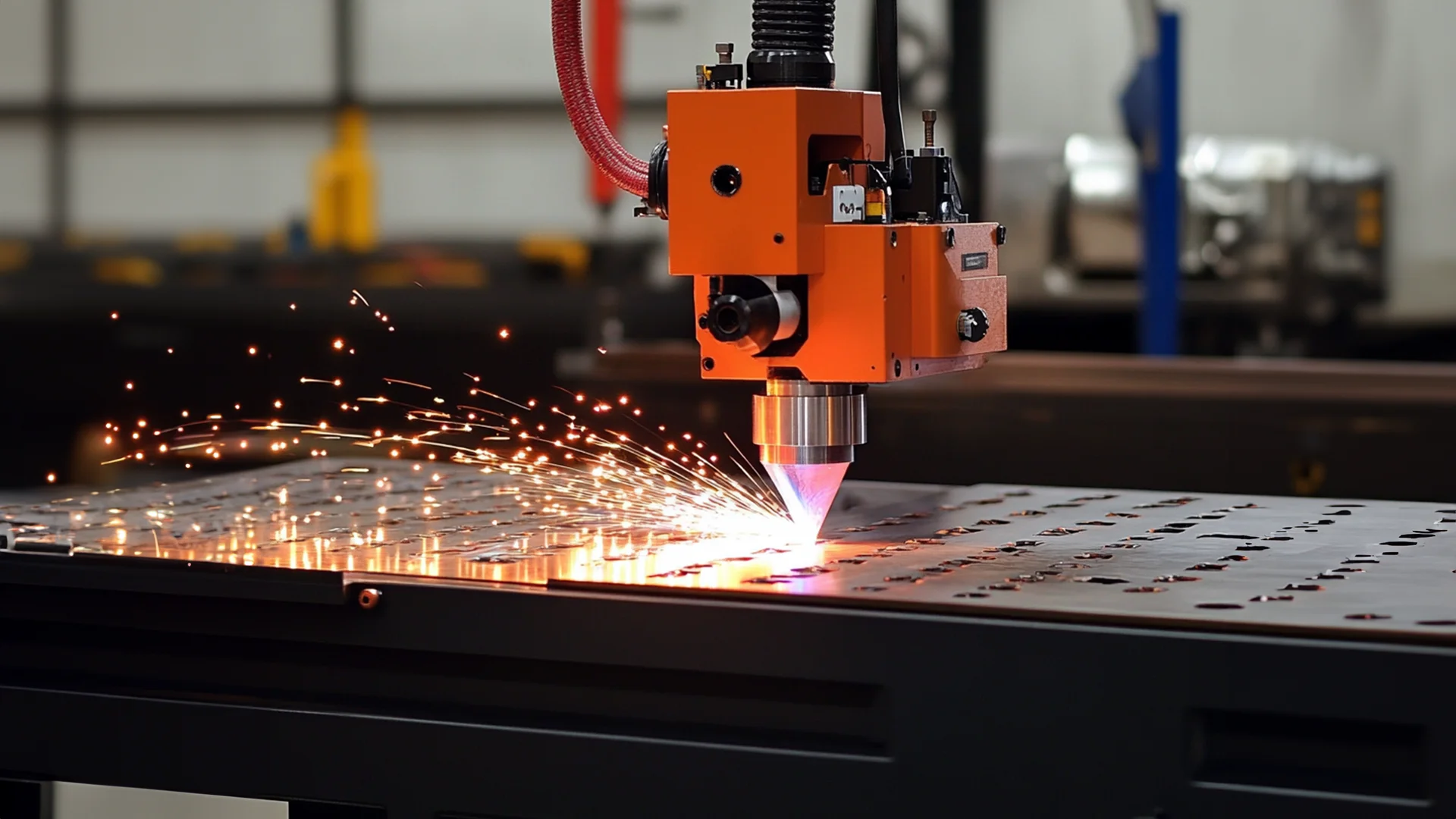Trade Counter Open Monday to Friday, 8.30am-5pm
What is a CNC Plasma Cutter?
 Precision and efficiency are vital in metal fabrication and manufacturing.
Precision and efficiency are vital in metal fabrication and manufacturing.
The ability to create accurate, clean cuts quickly can make a significant difference in productivity and cost-effectiveness.
One tool that has greatly advanced these aspects is the CNC plasma cutter.
These machines combine computer numerical control (CNC) technology with plasma cutting to deliver precise results across various industries.
Knowing their benefits and limitations can help businesses make informed decisions based on their unique needs.
This article delves into the intricacies of CNC plasma cutters, exploring their functions, practical uses, advantages, disadvantages, and comparisons with other cutting technologies.
Whether you are considering investing in a CNC plasma cutter or simply wish to understand more about this technology, this comprehensive guide will provide valuable insights.
What is a CNC Plasma Cutter?

A CNC plasma cutter is a machine that uses CNC technology to guide a plasma torch for cutting through metal.
The term ‘CNC’ refers to the automated control of machinery through computer software, while ‘plasma’ refers to the high-temperature, ionised gas used to create the cutting arc.
This combination allows for precision cutting of electrically conductive materials like steel, aluminium, brass, and copper.
The process begins when a high-velocity jet of ionised gas, or plasma, is directed towards the metal.
An electrical current passes through this gas, creating an intense arc that melts the material.
Simultaneously, the gas blows away the molten metal, resulting in a clean, precise cut.
The CNC system controls the movement of the plasma torch (on a CNC plasma table) based on programmed designs, ensuring accurate and consistent cuts.
CNC plasma cutters are widely used in metal fabrication, manufacturing, automotive repair, construction, and art.
They can create intricate shapes, detailed patterns, and large industrial components with high precision.
Compared to manual cutting methods, CNC plasma cutters offer faster production speeds, improved accuracy, and reduced material waste.
Their versatility and efficiency make them an essential tool in many industries.
What Industries use a CNC Plasma Cutter?
CNC plasma cutters are used across various industries due to their precision, speed, and versatility.
These machines excel in cutting through electrically conductive metals like steel, aluminium, and copper, making them valuable in several fields.
Metal Fabrication
The metal fabrication industry is one of the primary users of CNC plasma cutters.
These machines can precisely cut complex shapes from steel, aluminium, and other conductive metals.
Metal fabricators use them to create components for machinery, equipment, and structures.
The high level of accuracy reduces material waste and increases efficiency.
Construction
In construction, CNC plasma cutters are used to shape structural steel for buildings, bridges, and infrastructure projects.
The ability to cut thick metal sheets quickly and accurately ensures that metal parts fit together properly.
This precision helps save time and minimise costly errors.
Automotive
CNC plasma cutters are vital in the automotive industry.
They help manufacture vehicle parts such as chassis components, brackets, and custom modifications.
The machines' speed and ability to handle different metal thicknesses make them essential for both large-scale production and customised automotive work.
Art and Design
Artists and designers use CNC plasma cutters to create detailed metal sculptures, decorative panels, and signage.
These machines provide the ability to cut intricate patterns and shapes that would be difficult to achieve by hand.
This makes them popular for creative, one-of-a-kind projects.
Aerospace and Shipbuilding
The aerospace and shipbuilding industries use CNC plasma cutters for manufacturing metal components that require precision.
These industries demand high-quality parts with strict tolerances, making CNC plasma cutters valuable for producing complex and durable components.
Agriculture and Heavy Equipment
CNC plasma cutters are used to produce parts for agricultural machinery and heavy equipment.
The ability to cut thick, durable metal sheets allows manufacturers to create reliable, long-lasting components for these demanding applications.
What are the Benefits to Using a CNC Plasma Cutter?

Utilising a CNC plasma cutter offers several advantages:
Precision and Accuracy
One of the main benefits of using a CNC plasma cutter is its precision.
These machines can cut intricate designs and complex shapes with minimal errors.
The computer-controlled technology ensures consistent results, reducing the need for manual adjustments.
This accuracy is essential for industries like aerospace and automotive, where exact specifications are crucial.
Speed and Efficiency
CNC plasma cutters are faster than traditional cutting methods.
They can slice through thick metal sheets quickly, saving time and increasing productivity.
This speed does not compromise the quality of the cut, making it an efficient solution for both small-scale projects and large-scale production.
Versatility
A CNC plasma cutter can handle various conductive metals, including steel, aluminium, copper, and brass.
It can cut different thicknesses, making it suitable for diverse applications across multiple industries.
Whether it's creating detailed artwork or heavy-duty machine components, CNC plasma cutters are highly adaptable.
Cost-Effectiveness
Using a CNC plasma cutter can reduce material waste due to its precise cutting ability.
The computer-controlled process also minimises human errors, reducing the need for costly rework.
Additionally, these machines require less manual labour, saving businesses on operational costs.
Safety
Modern CNC plasma cutters are designed with safety features to protect operators.
Automated processes reduce the need for close, manual handling, lowering the risk of accidents.
What are the Drawbacks to Using a CNC Plasma Cutter?
While a CNC plasma cutter has many advantages, there are some downsides to consider.
Limited Material Compatibility
While CNC plasma cutters are effective for cutting conductive metals like steel, aluminium, and copper, they are not suitable for non-conductive materials such as wood, plastic, or glass.
This limitation restricts their use in industries requiring versatile material cutting.
High Initial Investment
CNC plasma cutters can be expensive to purchase and install, especially for small businesses or hobbyists.
Although they provide cost savings over time through increased efficiency, the initial investment may be a barrier for some.
Additionally, ongoing maintenance costs and the need for consumables like gases and electrodes can add up.
Less Precision Than Laser Cutters
Although highly accurate, CNC plasma cutters may not achieve the same level of precision as laser cutters, especially for intricate and detailed designs.
This can be a drawback for industries requiring extremely fine tolerances.
Health and Safety Risks
While modern CNC plasma cutters come with safety features, they still pose risks.
The cutting process generates high temperatures, sparks, and fumes, which require proper ventilation, fume extraction and protective equipment. Inadequate safety measures can lead to accidents or health issues for operators.
Noise and Energy Consumption
CNC plasma cutters can be noisy, which may require additional soundproofing in certain environments.
They also consume significant amounts of energy, increasing operational costs.
How is a CNC Plasma Cutter Different From a Laser Cutter?

Both CNC plasma cutters and laser cutters are used for precision cutting, but they differ in several aspects:
Cutting Method
A CNC plasma cutter uses an ionised gas, like oxygen or nitrogen, to create a plasma arc that melts through metal.
In contrast, a laser cutter uses a concentrated beam of light to cut or engrave materials.
The plasma method is ideal for cutting thick, conductive metals, while laser cutting excels in detailed, precise cuts on thinner materials.
Material Compatibility
CNC plasma cutters primarily cut conductive metals such as stainless steel, aluminium, and copper.
They cannot cut non-metallic materials.
Laser cutters, however, are more versatile.
They can cut metals, plastics, wood, and ceramics, making them suitable for a broader range of industries.
Precision and Speed
Laser cutters generally offer higher precision, especially for intricate designs and fine details.
CNC plasma cutters, while accurate, may struggle with detailed work.
However, plasma cutters are typically faster when cutting thicker metals, making them more efficient for heavy-duty projects.
Cost
CNC plasma cutters tend to be more cost-effective than laser cutters, especially for thicker materials.
Laser cutters, due to their advanced technology and versatility, usually have a higher initial cost.
This makes plasma cutters a more accessible option for businesses focusing mainly on metal cutting.
How is a CNC Plasma Cutter Different From a Waterjet Cutter?

CNC plasma cutters and waterjet cutters are both used for cutting materials, but they have distinct differences:
Cutting Method
A CNC plasma cutter uses an electrically charged gas to produce a high-temperature plasma arc.
This arc melts through conductive metals like steel and aluminium.
In contrast, a waterjet cutter uses a high-pressure stream of water mixed with abrasive materials to cut through various materials.
Unlike plasma, the waterjet cutting process is cold, preventing heat-related material warping.
Material Compatibility
CNC plasma cutters are limited to cutting electrically conductive metals.
They cannot handle non-metals like glass, ceramics, or plastics.
Waterjet cutters, however, can cut through almost any material, including metals, stone, rubber, and composites.
This versatility makes waterjets valuable in industries with diverse material needs.
Precision and Finish
Waterjet cutters are known for their high precision and smooth edge finishes, with no need for secondary processing.
Plasma cutters offer speed and efficiency for thicker metals but may leave slight roughness on cut edges.
For projects requiring high detail and minimal finishing work, waterjets are preferred.
Cost
CNC plasma cutters are generally more affordable to purchase and maintain compared to waterjet cutters.
Waterjets involve higher operational costs due to water consumption, abrasive materials, and the need for more complex machinery.
Plasma cutters are a cost-effective option for businesses focusing primarily on metalwork.
Conclusion
You should now have an understanding of exactly what a CNC plasma cutter is.
CNC plasma cutters are valuable tools in the world of metal fabrication and manufacturing.
Their precision, speed, and versatility make them a popular choice for industries ranging from construction to automotive and art.
Despite their limitations, such as a restricted material range and the need for post-cut finishing, the benefits often outweigh the drawbacks for many professionals.
Understanding the differences between CNC plasma cutters, laser cutters, and waterjet cutters can help businesses choose the right technology for their specific needs.
Whether you are a small workshop or a large manufacturing company, investing in a CNC plasma cutter can improve efficiency, reduce material waste, and enhance the quality of your work.
For more information, or if you are looking to purchase a CNC plasma cutter, get in contact with Xtreme Plasma today.
Powered by Lightspeed
Display prices in:GBP
